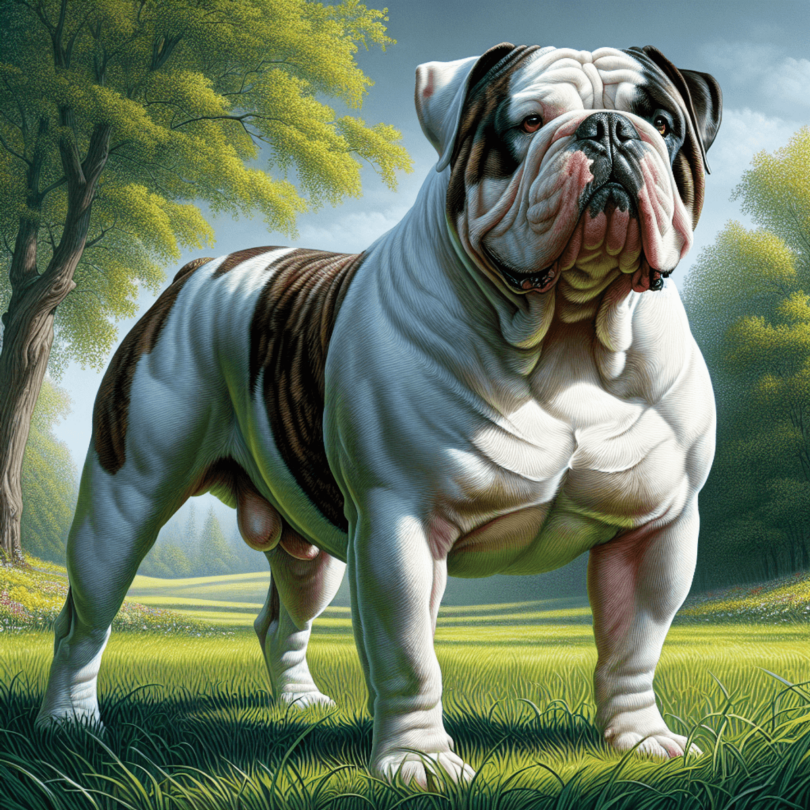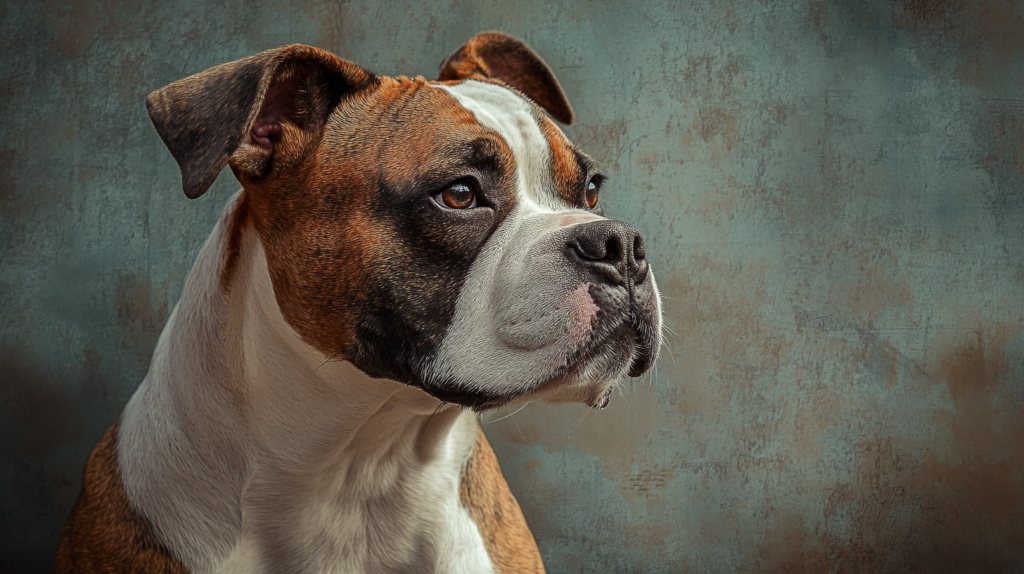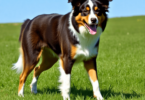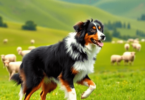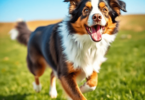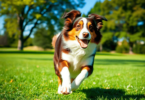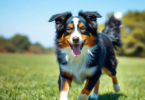Introduction to the American Bulldog
Welcome to the ultimate guide to the American Bulldog! This muscular and loyal breed is known for its protective nature and high exercise needs. Originating in the United States, American Bulldogs are characterized by their:
- Stocky build
- Large square head
- Broad muzzle
- Powerful jaws
Their coat is typically short and soft, often white with patches of color.
🦴 Did you know? American Bulldogs are not just pets but devoted family members. Their intelligence, affectionate demeanor, and bravery make them excellent companions.
Understanding the characteristics and care needs of this loyal companion is essential for potential owners. From health considerations to training tips, this guide covers everything you need to know about embracing life with an American Bulldog!
1. American Bulldog Breed Overview
The American Bulldog is a large breed dog known for its muscular frame, alert expression, and loyalty.
General Characteristics
Here are some key characteristics of the American Bulldog:
- Size: American Bulldogs are solidly built, usually weighing between 60 to 120 pounds. Males typically stand between 22 to 28 inches tall at the shoulder, while females range from 20 to 26 inches.
- Coat Colors: Their coats are often short and smooth, with common colors including white, brindle, fawn, and various combinations of these shades. Distinctive markings often add to their unique appearance.
- Head Shape & Muzzle: One of the most defining features is their broad, square-shaped head coupled with a strong, well-defined muzzle. This gives them both a powerful look and an undeniable charm.
Classification Within Dog Breeds
American Bulldogs are classified as working dogs in many kennel clubs due to their history as farm dogs and protectors. They share a close lineage with other bulldog breeds but have distinct differences:
- English Bulldog: Smaller and stockier with more pronounced facial wrinkles.
- French Bulldog: Much smaller in size and known for its bat-like ears.
- Olde English Bulldogge: A recreation of the original bulldog breed used for bull-baiting, resembling a mix of both English and American Bulldogs.
Comparison With Other Bulldog Breeds
Unlike the English Bulldog’s laid-back demeanor or the Frenchie’s playful attitude, American Bulldogs are known for their high energy levels and robust physicality. They excel in agility courses and enjoy activities that challenge both their minds and bodies.
Understanding these American Bulldog characteristics helps potential owners appreciate what makes this breed unique. From their striking appearance to their hardworking nature, there’s no denying that American Bulldogs bring a lot of personality to any household!
2. History and Development of the American Bulldog
Historical Background
The American Bulldog has roots dating back to 17th century England, where its ancestors were bred for bull-baiting—a gruesome sport that involved dogs attacking bulls. These early bulldogs were known for their bravery, tenacity, and unmatched strength.
When English settlers arrived in North America, they brought these robust canines with them. The American Bulldog evolved on American soil, transitioning from a bull-baiter to an indispensable farm worker. They excelled at a variety of tasks:
- Herding cattle
- Guarding property
- Hunting feral hogs
Their versatility made them invaluable to farmers and ranchers across the Southern United States.
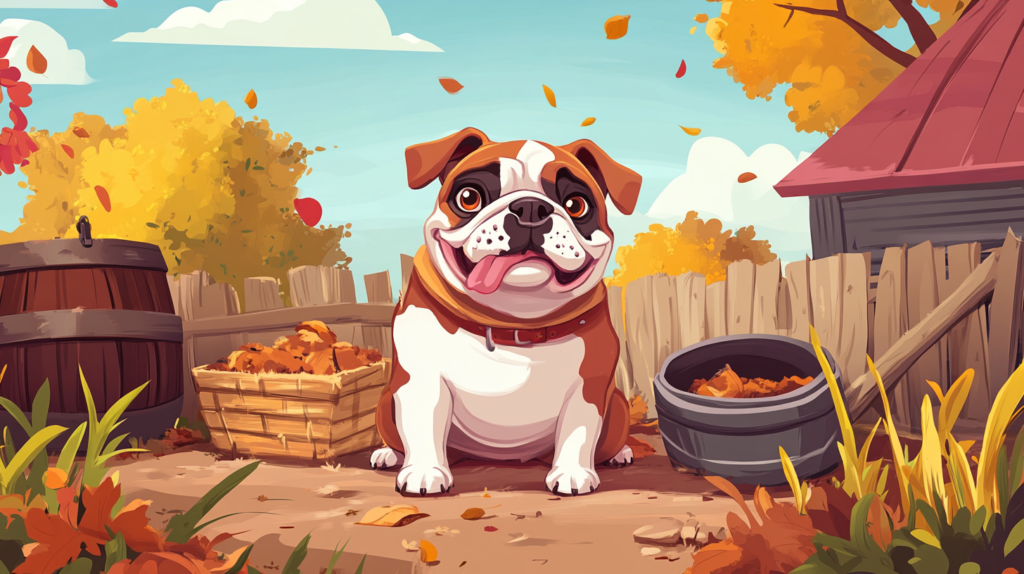
Post-War Revival Efforts
After World War II, the breed faced near extinction. The economic downturn and shift in agricultural practices reduced the need for working dogs like the American Bulldog. This is where John D. Johnson and Alan Scott come into the picture.
John D. Johnson played a crucial role in preserving the breed’s lineage. He meticulously selected specimens that embodied the traditional strength and endurance of early bulldogs. Johnson’s line, often referred to as the Bully or Classic type, is characterized by its larger size and more pronounced features.
Alan Scott also contributed significantly to the breed’s revival. His efforts focused on creating a more agile and versatile dog, leading to what is now known as the Standard or Performance type. Scott’s version retained all the working capabilities while being slightly leaner and quicker than Johnson’s line.
Modern Recognition
Thanks to these dedicated breeders, the American Bulldog flourished once again. The breed received recognition from reputable organizations:
- United Kennel Club (UKC) in 1999
- American Kennel Club (AKC) Foundation Stock Service in 2019
These milestones cemented the American Bulldog’s status as a beloved companion and versatile working dog.
This rich history adds layers of depth to understanding why American Bulldogs are so loyal and hardworking today—traits that were essential for their survival and purpose throughout centuries.
American Bulldog Physical Characteristics
The American Bulldog is unmistakably athletic and robust, boasting a physique that speaks volumes about their strength. These dogs typically stand between 20 to 28 inches tall at the shoulder, with males weighing anywhere from 75 to 125 pounds and females slightly lighter, ranging from 60 to 100 pounds.
Distinctive Features
- Head: The breed’s head is large and square, giving them an imposing yet charming appearance. Their broad and deep-set eyes often exude a sense of alertness and intelligence.
- Muzzle: A broad muzzle with powerful jaws is another hallmark. The muzzle is typically short but proportional to their head size.
- Ears: Their ears can be either cropped or left natural. When natural, they may appear rose-shaped or semi-prick.
- Tail: Generally thick at the base and tapering towards the end, their tail is often carried low when relaxed but may rise when the dog is active or alert.
Coat and Colors
An American Bulldog’s coat is short, sleek, and smooth to the touch. It’s designed to be low-maintenance while providing some protection against harsh weather conditions. The most common coat color is white, often with patches of brindle, red, or various shades of brown.
Body Structure
The breed showcases a well-muscled body with a broad chest and strong back. Their legs are sturdy and straight, reflecting their agility and endurance—traits that made them exceptional farm dogs in historical settings. Their gait is smooth yet powerful, demonstrating both grace and strength in motion.
American Bulldogs are known for their powerful build and distinctive physical traits.
With such a unique combination of physical attributes, it’s no wonder these dogs have won hearts across the globe. For more detailed insights into this remarkable breed’s characteristics, you can explore resources like Chewy’s American Bulldog breed page or the comprehensive guide on Pawlicy. Additionally, the UKC’s website offers valuable information about the breed as well.
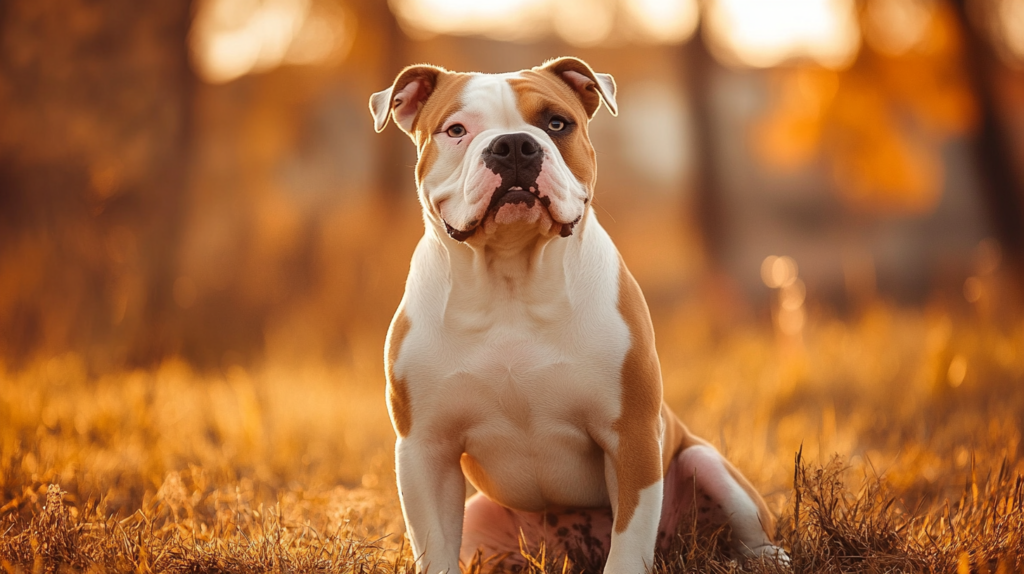
3. Temperament and Behavior Traits of the American Bulldog
American Bulldogs are known for their great temperament, making them excellent family pets. Their personality traits are as strong as their physical build, ensuring they’re not just loyal companions but also protective guardians.
Key Personality Traits
- Loyalty: An American Bulldog’s loyalty is unmatched. These dogs form strong bonds with their families and thrive on being involved in daily activities.
- Protective Nature: This breed’s history as a working and guarding dog shines through in its protective instincts. They are naturally alert and will go above and beyond to protect their loved ones.
- Affectionate with Children: Known for their love towards children, American Bulldogs can be gentle playmates. Their patience and nurturing nature make them ideal companions for kids.
Importance of Early Socialization
Early socialization plays a crucial role in shaping a well-rounded American Bulldog. Exposure to different environments, people, and animals helps reduce any potential behavioral issues. The key benefits of early socialization include:
- Confidence Building: Socialized American Bulldogs show more confidence and adaptability in new situations.
- Reduced Aggression: Proper socialization lowers the risk of aggressive tendencies by teaching them to interact positively with other dogs and humans.
- Enhanced Obedience: A well-socialized Bulldog is likely to respond better to training commands, making them easier to handle.
For adult dogs who may not have had early socialization, there are still ways to help them adjust.
Example Scenario: Imagine your American Bulldog meeting another dog at the park for the first time. If they’ve been properly socialized, this interaction can be smooth and positive. Without early socialization, such encounters could be stressful or even confrontational.
Their loyalty, protective nature, and affection towards family members make American Bulldogs exceptional pets. With early socialization, these traits are further enhanced, ensuring they grow into well-behaved and confident companions ready to face the world with you by their side.
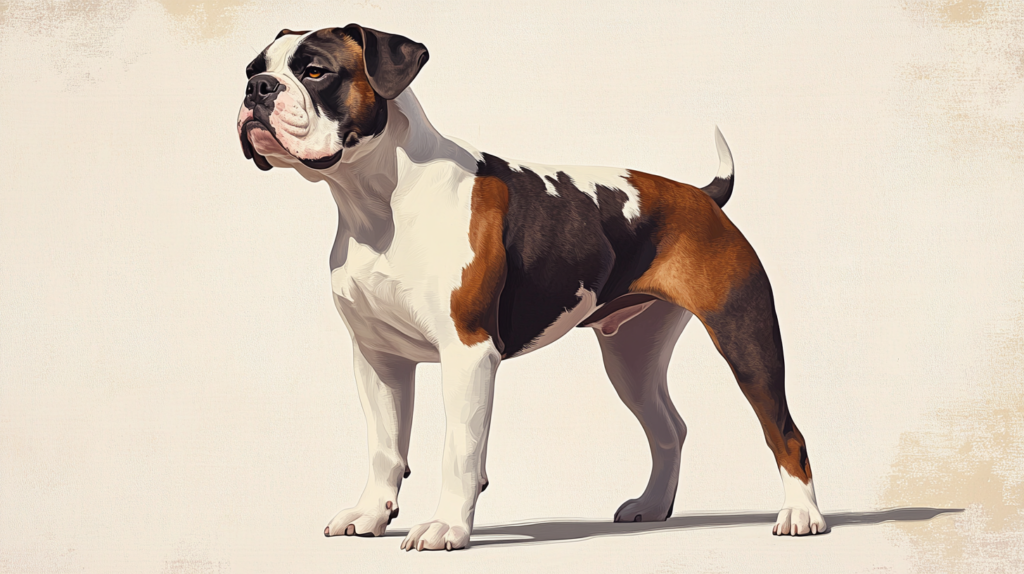
4. Health Considerations for American Bulldogs
When it comes to the well-being of your American Bulldog, understanding common health concerns is vital. These robust canines are generally healthy, but like all breeds, they have some predispositions that potential owners should be aware of.
Common Health Issues
American Bulldogs may face:
- Hip Dysplasia: This genetic condition affects the hip joints and can lead to arthritis or mobility issues. Regular check-ups and maintaining a healthy weight are essential in managing this condition.
- Skin Allergies: Prone to allergies, American Bulldogs can develop skin irritations due to environmental factors or food sensitivities. Regular grooming and a balanced diet can help keep their skin healthy.
- Elbow Dysplasia: Another joint-related condition that can cause pain and lameness. Early detection through X-rays and appropriate treatment plans are crucial.
- Thyroid Disorders: Hypothyroidism can affect their metabolism, leading to weight gain and lethargy. Routine blood tests can help diagnose and manage this condition effectively.
- Ocular Conditions: Issues like cherry eye or entropion (inward rolling of the eyelid) may require surgical intervention for optimal eye health.
Ensuring a Healthy Lifespan
The average lifespan of an American Bulldog ranges from 10 to 16 years. To ensure your pup lives a long, healthy life:
- Regular Veterinary Check-Ups: Schedule annual exams with your vet to catch any potential health issues early.
- Balanced Diet: Feed high-quality dog food tailored to their specific dietary needs. Consult with your vet for personalized recommendations.
- Exercise: Keep them fit with regular physical activity. This not only helps maintain a healthy weight but also supports joint health.
- Preventative Care: Keep up with vaccinations, flea and tick prevention, and dental care routines.
By staying proactive about their health, you can enjoy many joyful years with your loyal companion!
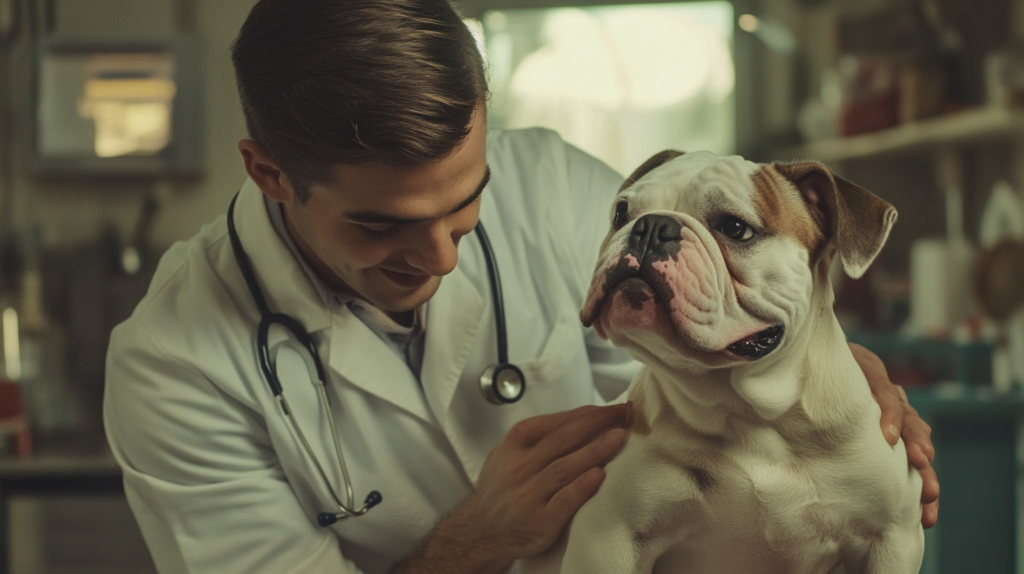
5. Nutrition Needs for American Bulldogs’ Well-being
Nutrition plays a crucial role in maintaining the health and vitality of your American Bulldog. Understanding their specific dietary requirements will ensure they grow strong and remain active throughout their lives.
Specific Dietary Requirements
American Bulldogs thrive on a balanced diet rich in high-quality protein, fats, carbohydrates, vitamins, and minerals. Key nutrients to focus on include:
- Protein: Essential for muscle development and repair. Aim for meat-based proteins like chicken, beef, or fish.
- Fats: Provide energy and support healthy skin and coat. Look for sources like fish oil or flaxseed.
- Carbohydrates: Offer sustained energy levels. Opt for complex carbs such as brown rice or sweet potatoes.
- Vitamins & Minerals: Crucial for overall health. Ensure the diet includes vitamin E, omega fatty acids, calcium, and phosphorus.
Recommended Food Types
Choosing the right food type ensures your American Bulldog receives all necessary nutrients without unnecessary fillers:
- Dry Kibble: Convenient and helps maintain dental health by reducing plaque buildup.
- Wet Food: Offers hydration and is often more palatable for picky eaters.
- Raw Diets: Mimic natural eating habits but require careful preparation to avoid nutritional imbalances.
- Homemade Meals: Allow complete control over ingredients but must be well-researched to meet dietary needs.
When selecting commercial dog food, look for products labeled as “complete and balanced” by reputable organizations such as the Association of American Feed Control Officials (AAFCO).

Feeding Schedules
To keep your American Bulldog happy and healthy, consider these feeding guidelines:
- Divide daily food intake into two or three portions to prevent bloating and promote digestion.
- Puppies may require three to four meals per day while adult dogs typically do well with two meals.
- Adjust portion sizes based on activity level, age, and weight to avoid obesity.
“A well-fed dog is a happy dog!” Ensuring that your American Bulldog receives proper nutrition keeps them energetic, healthy, and ready for all kinds of adventures.
Feeding your furry friend with attention to their specific needs creates a strong foundation for a long, vibrant life together.
6. Exercise Requirements to Keep Your American Bulldog Happy and Fit
American Bulldogs are energetic dogs with strong bodies. It’s important to meet their high exercise needs for their physical health and mental well-being.
Daily Exercise Recommendations
To keep your American Bulldog happy and fit, they need at least 60 minutes of physical activity every day. You can divide this time into multiple sessions throughout the day based on your schedule and your dog’s energy levels. This aligns with the general exercise requirements for dogs which emphasizes the importance of regular physical activity.
Types of Activities Suitable for the Breed
Not all exercises are suitable for this powerful breed. Here are some activities that will make them happy:
- Walking on a Leash: Take your bulldog for a brisk walk around the neighborhood or a local park. Aim for a 30-minute walk twice a day.
- Playing Fetch: This classic game not only provides physical exercise but also stimulates their minds. Use durable toys that can withstand their strong jaws.
- Tug-of-War: Another great activity that taps into their natural strength. Use a sturdy rope toy and remember to let them win occasionally—it boosts their confidence.
- Obstacle Courses: Set up a mini agility course in your backyard with hurdles, tunnels, and weave poles. It’s a fun way for them to use both brains and muscles.
- Swimming: If you have access to a dog-friendly pool or lake, swimming can be an excellent low-impact exercise that works wonders for their muscles.
Considering Their Strength During Playtime
Given the American Bulldog’s robust build, it’s essential to consider their strength during playtime. Always supervise interactions with smaller pets or children to prevent accidental injuries. Use toys designed for large breeds—flimsy ones won’t last long against those powerful jaws.
Keeping your American Bulldog active isn’t just about tiring them out; it’s about raising a well-rounded, happy companion ready for any adventure life throws at you!
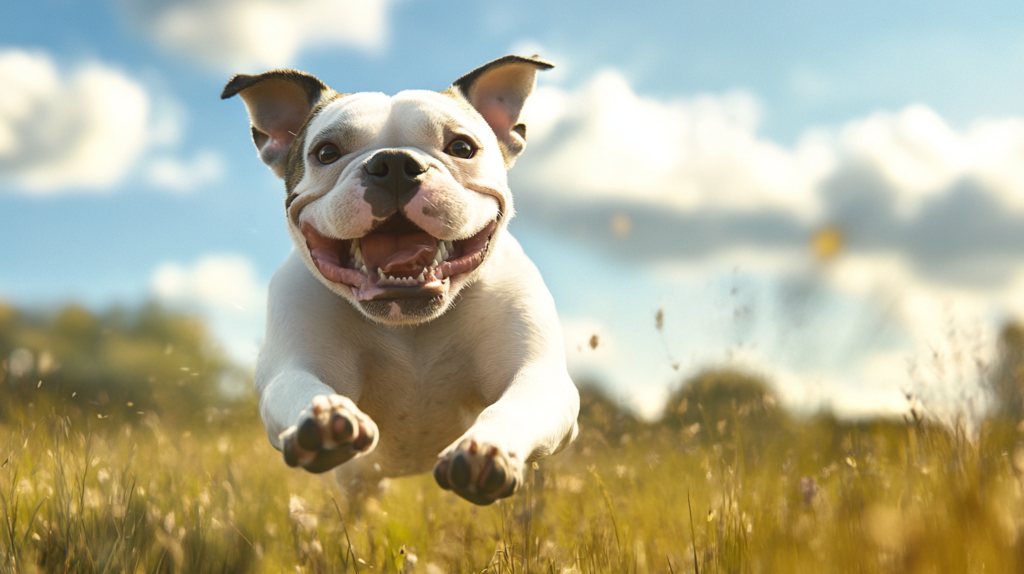
7. Grooming Essentials for Maintaining an American Bulldog’s Coat Health
Keeping your American Bulldog looking and feeling fabulous isn’t as daunting as it may seem. Let’s dive into some essential American Bulldog grooming tips to help you along the way.
Brushing Frequency
- Once a week is the magic number! Regular brushing helps minimize shedding and keeps their coat in tip-top shape.
- Using a soft-bristle brush or a rubber grooming mitt works wonders on their short, soft coat.
- Make it a bonding activity. Your Bulldog will love the extra attention, and you’ll love the reduced fur tumbleweeds around the house!
Bathing Guidelines
American Bulldogs are generally low-maintenance when it comes to bath time.
- Aim to bathe your pup every few months or when dirty. Overbathing can strip their coat of natural oils, leading to dry skin.
- Opt for a gentle dog shampoo tailored for sensitive skin to avoid any irritation.
- Make sure to rinse thoroughly. Leftover shampoo can cause itchiness or discomfort.
Bonus Tips
- Nail clipping: Keep those nails trimmed to prevent discomfort and improve overall hygiene.
- Ear cleaning: Regularly check and clean their ears using a vet-approved cleaner to prevent infections.
- Dental care: Brush their teeth a few times a week to keep that winning smile and fresh breath.
Taking these steps ensures your American Bulldog stays healthy, happy, and stunningly handsome.

8. Training Insights: Shaping Your American Bulldog’s Behavior Through Positive Reinforcement Techniques
Training an American Bulldog can be a rewarding experience, thanks to their intelligence and eagerness to please. Here’s how you can shape their behavior effectively using positive reinforcement techniques.
Basic Obedience Training Techniques
American Bulldogs respond exceptionally well to reward-based methods. This approach not only strengthens your bond but also makes training sessions enjoyable for your furry friend. Some effective techniques include:
- Treats: Use small, high-value treats to reward desired behaviors immediately. For instance, when teaching commands like “sit” or “stay,” give a treat as soon as they perform the action.
- Praise: Verbal praise such as “good boy” or “well done” can be incredibly motivating. Combine it with gentle petting to reinforce good behavior.
- Playtime: Integrate short play sessions as rewards. A quick game of fetch can serve as a delightful incentive for completing a task successfully.
Importance of Early Training Classes
Starting training at an early age is crucial for developing good manners and social skills in American Bulldogs. Here’s why:
- Establishing Routine: Puppies adapt more easily to routines, making it simpler to instill good habits.
- Preventing Behavioral Issues: Early training helps nip undesirable behaviors in the bud, such as aggression or excessive barking.
- Socialization: Enrolling your pup in training classes exposes them to different environments and other dogs, fostering confidence and reducing fearfulness.
Pro Tips for Training Success
- Keep sessions short and engaging—around 10-15 minutes—to maintain focus.
- Be consistent with commands and rewards.
- Always end on a positive note, ensuring your dog looks forward to the next session.
Training tips for American Bulldogs boil down to patience, consistency, and a lot of love. This intelligent breed thrives on engagement and will quickly become a well-mannered member of your family with the right approach.
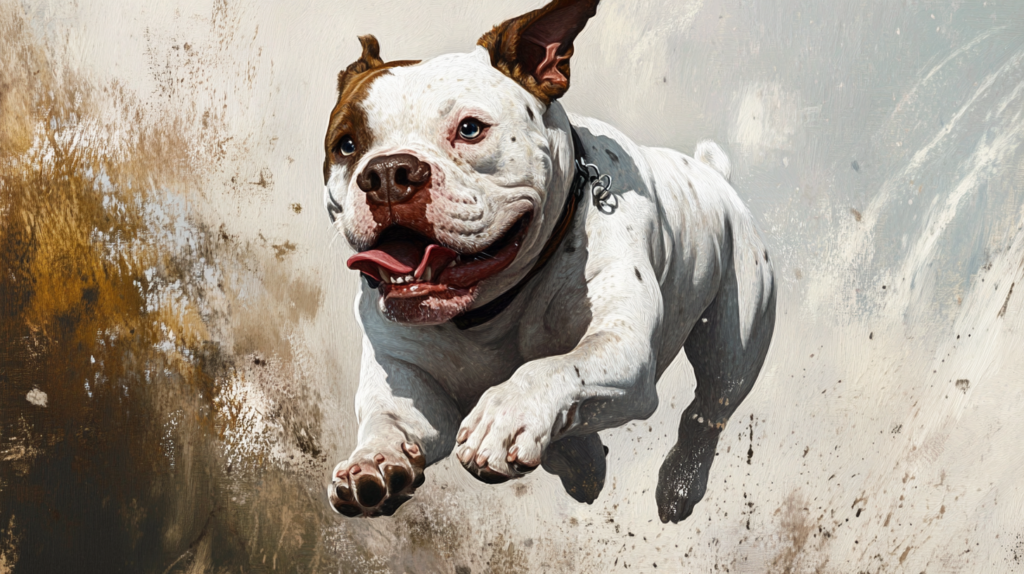
American Bulldog as a Family Pet
Welcoming an American Bulldog into your family can be an incredibly rewarding experience. These dogs are known for their loyalty and protective nature, making them excellent guardians of the home. Their affectionate disposition ensures they form strong bonds with all family members, including children.
Key Attributes:
- Loyalty: American Bulldogs are fiercely loyal to their families. They will go to great lengths to protect their loved ones.
- Protective Instincts: Their natural guarding instincts make them vigilant and aware of their surroundings, providing a sense of security.
- Affectionate: Despite their tough exterior, these dogs are loving and enjoy cuddling with their human companions.
Compatibility with Children:
American Bulldogs generally do well with children, thanks to their patient and gentle demeanor. They often become playmates and protectors, ensuring the safety of younger family members during playtime. Their sturdy build also means they’re less likely to get injured during rough-and-tumble games.

Socialization:
Early socialization is crucial for American Bulldogs to develop a well-rounded temperament. Introducing them to various environments, people, and other animals helps in curbing any potential behavioral issues. However, it’s important to note that aggression towards people can arise if they are not properly socialized.
“An early start in socialization can make a world of difference in shaping an American Bulldog’s personality.”
Activities and Interaction:
These energetic dogs thrive in active households where they can engage in regular exercise and playtime. Activities like fetch, tug-of-war, or simply running around the yard can help channel their energy positively.
- Daily Walks: At least 60 minutes of walking or other physical activities.
- Playtime: Interactive games that stimulate both mind and body.
By understanding these traits and needs, families can ensure a fulfilling life for their American Bulldog, creating lasting memories with this loyal companion. It’s essential to remember that every dog is unique and may have different activity needs, so being attentive to those requirements will further enhance the pet-owner relationship.
Conclusion: Embracing Life with an American Bulldog as Your Loyal Companion!
Choosing an American Bulldog means welcoming a loyal, protective, and affectionate friend into your home. They thrive best in active households where they can receive ample exercise and mental stimulation. Experienced owners who are committed to investing time in training and socializing their American Bulldog will find this breed to be a loving and devoted family member. Ready to embark on this rewarding journey? Your new four-legged companion is just waiting to show you what loyalty truly means!
FAQs (Frequently Asked Questions)
What are the key characteristics of the American Bulldog?
American Bulldogs are large breed dogs known for their loyalty, protective nature, and strong build. They typically have a distinct head shape and muzzle, with various coat colors. Understanding these characteristics is essential for potential owners.
What is the historical background of the American Bulldog?
The American Bulldog has a rich history, originally used in bull-baiting and farm work. The breed saw revival efforts post World War II led by notable breeders such as John D. Johnson and Alan Scott, who helped shape the modern American Bulldog.
How can I ensure my American Bulldog remains healthy?
To maintain your American Bulldog’s health, be aware of common issues like hip dysplasia and skin allergies. Regular veterinary check-ups are crucial, along with a balanced diet and proper exercise to promote a long, healthy life.
What nutritional needs should I consider for my American Bulldog?
American Bulldogs require a diet rich in high-quality protein sources to support their growth and overall health. It’s recommended to divide their daily meals into two or three portions to maintain energy levels.
How much exercise does an American Bulldog need?
American Bulldogs have high energy levels and require at least 60 minutes of physical activity daily. Suitable activities include walking on a leash and playing fetch, which help keep them happy and fit.
What training methods work best for American Bulldogs?
Positive reinforcement techniques, such as reward-based methods using treats or praise, are effective for training American Bulldogs. Early training classes are important to establish good manners from a young age.
